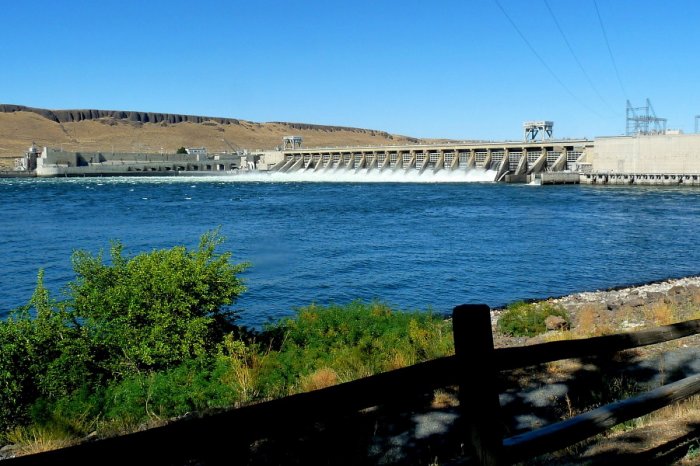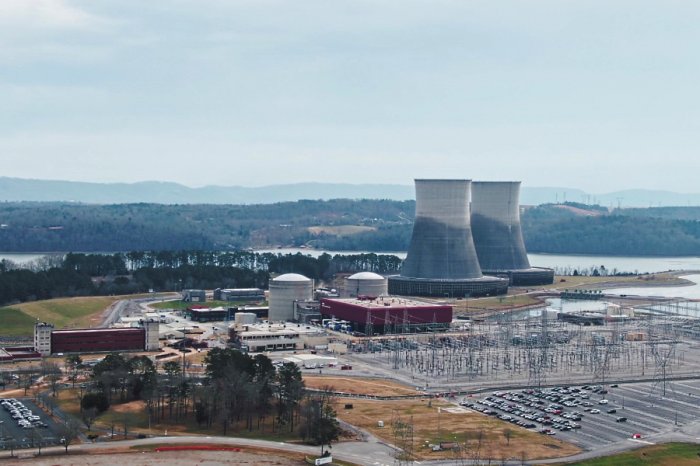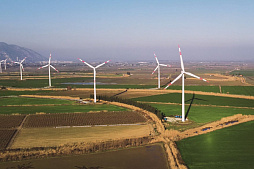After receiving the necessary documents (application form and project presentation), our team will try to review your request as soon as possible, and leading experts will offer the best options for project funding.
In return, the private sector commits to investing in, developing, and managing these assets and often pays a fee to the public entity for their use.
Understanding the concessional financing
The term "concessional financing" is rooted in the concept of "concession," which referred to a grant or privilege given by a government or authority.In the context of financing, it signifies the concession or favorable terms granted to a borrower, often for public or developmental purposes.
In concession financing, potential capital providers can include government agencies, international financial institutions, development banks, private sector investors, non-governmental organizations (NGOs), and donor agencies. These entities can offer financial support, grants, or concessional loans to fund development projects. The choice of capital provider depends on the nature of the project and its alignment with the goals and priorities of each entity.
Concessional financing has its theoretical foundations in development economics and international financial institutions.
It is driven by the idea that concessional terms helps foster economic growth, alleviate poverty, and reduce global economic disparities. Historically, this type of financing has been widely used by governments and international financial organizations to support infrastructure projects, social development, and humanitarian efforts in less-developed regions of the planet.
One of the prominent examples is the World Bank's International Development Association (IDA), which provides low-interest loans or grants to poor countries. IDA, a part of the World Bank Group, is one of the largest providers of concessional financing. IDA loans have been used in financing critically important projects related to healthcare, education, and infrastructure.
In 2022, IDA had provided concessional financing to more than 76 countries. Another prominent international institutions, such as the African Development Fund, the Asian Development Fund, and the Inter-American Development Bank, also provide concessional financing in their regions.
From the other hand, the Asian Development Bank offers concessional loans for infrastructure projects, clean energy initiatives, and poverty reduction programs in Asia and the Pacific region.
According to the World Bank, the most common financial instruments employed for providing such financing are loans, grants, and, to some extent, equity investments. Concessional financing may take the form of grants or technical assistance funding to prepare regional industrial decarbonization policy. Financing can also be extended in the form of first-loss guarantees, where a third party compensates creditors in case of borrower default; the presence of such a guarantee can assist, for example, renewable power plants in attracting large private investors.
The importance of concessional financing
Concessional financing provides companies with access to capital at favorable terms.This can include lower interest rates, longer repayment periods, and more flexible terms, making it easier for large businesses to fund major initiatives.
Relying solely on traditional sources of funding, such as commercial loans or equity, can be limiting. Concessional financing diversifies the sources of capital available to businesses, reducing their dependency on any one type of funding.
Large companies often operate in high-risk environments. Concessional financing, which usually involves government backing or international financial institutions, can help mitigate some of these risks. It can act as a safety net, particularly in regions with political or economic instability. Finally, this type of financing allows companies to engage in strategic planning for the future, secure in the knowledge that they have access to funding with extended repayment periods.
From a modern marketing perspective, concessional financing can support businesses in expanding into new markets, especially in developing countries.
It allows companies to invest in infrastructure, facilities, and operations that may not be viable without concessional terms. Concessional financing can facilitate international business opportunities. Large businesses can participate in projects around the world, tapping into emerging markets or contributing to global development efforts.
The importance of concessional financing can be emphasized through the following:
• Infrastructure development: Modern concessional financing is a key mechanism for financing infrastructure projects, such as the construction and operation of ports, airports, roads, railways, and water supply systems. This contributes to infrastructure development, fostering economic growth and facilitating the global mobility of goods and people.
• Economic growth: Concessional financing generates new job opportunities and stimulates economic growth. Partnerships between the private and public sectors allow for increased investment in projects that may not be feasible with government funding alone.
• Efficient resource management: Transferring asset management and operation to the private sector can enhance their efficient use. Private companies, driven by profit motives, often have incentives to manage and operate assets effectively.
• International influence: Concessional financing can be a key factor in international relations. Foreign investors and companies may participate in concessional financing projects, promoting collaboration between countries and regions.
• Social benefits: Concessional financing can improve citizens' quality of life by enhancing infrastructure, providing services, and creating jobs.
• Use of pension funds and investment companies: Many large institutional investors, such as pension funds, invest in concessional financing promising projects, generating returns and diversifying their investment portfolios.
• Risk and reputation: Concessional financing involves specific risks, including political, financial, and technical risks. Therefore, careful project planning and risk management are essential. Successful projects can enhance the reputation of companies and countries.
Concessional financing plays a vital role in the modern economy, fostering infrastructure development, economic growth, and international collaboration.
However, its successful implementation requires right strategy, rigorous risk analysis, and effective management.
Types of concessional financing: classification
Concessional financing encompasses various financial instruments tailored to support development projects and initiatives, often in regions or sectors facing economic challenges.These instruments are designed to provide favorable terms to borrowing entities, making it more affordable for them to undertake projects with social, economic, or environmental benefits.
The selection of the concessional financing type is based on the unique needs and goals of projects:
1. Grants are often chosen when the primary goal is to address immediate humanitarian needs, support social programs, or assist vulnerable populations. They are suitable for projects where repayment may not be feasible or where the focus is on non-commercial objectives.
2. Concessional loans are ideal for projects that have economic potential but may face difficulties in attracting private-sector financing due to perceived risks or long gestation periods. Concessional loans offer terms that are more favorable than commercial loans, making projects economically viable.
3. Equity investments are employed when a large project requires substantial capital and is expected to generate long-term returns. They attract investors by providing ownership stakes and the potential for profit-sharing, making them especially suitable for large-scale infrastructure, startups, and enterprises with growth potential.
The choice of concessional financing type depends on the specific objectives, funding needs, and the nature of the project, ensuring that the financial approach aligns with the desired outcomes.
Table: Three primary types of concessional financing
| Types of concessional financing | Definition | Purposes | Examples |
| Grants | Grants are funds provided without the expectation of repayment. They are essentially gifts to support specific projects or programs. | Grants are commonly used to fund projects with a strong focus on social welfare, humanitarian assistance, or projects that benefit disadvantaged or vulnerable populations. | Humanitarian organizations often provide grants for disaster relief, healthcare initiatives, or education programs in regions affected by crises. |
| Environmental organizations offer grants to support conservation and sustainability projects, such as reforestation efforts or RES initiatives. | |||
| Governments and international institutions may allocate grants for poverty reduction programs and infrastructure development in developing countries. | |||
| Concessional loans | Concessional loans are loans offered at terms more favorable than those available through commercial lenders. These terms may include lower interest rates, extended repayment periods, or grace periods. | Concessional loans are typically used for projects that aim to stimulate economic growth, develop infrastructure, or support industries that may not attract private-sector financing due to perceived risks. | International financial institutions like the World Bank offer concessional loans to developing countries to finance projects such as the construction of roads, bridges, and educational facilities. |
| National development banks provide concessional loans to local businesses and startups, helping them expand, create jobs, and drive economic development. | |||
| RES initiatives often rely on concessional loans to encourage investment in clean energy projects. | |||
| Equity investments | Equity investments involve taking an ownership stake in a project or business in exchange for financing. This provides investors with an ownership interest and a share in potential profits. | Equity investments are typically used for projects that require substantial capital and are expected to generate returns over time, such as large-scale infrastructure or business ventures. | Private equity firms may invest in infrastructure projects, such as toll roads or utility companies, with the expectation of long-term returns. |
| Venture capital funds often provide equity investments to startups and tech companies, supporting innovation and job creation. | |||
| Governments may offer equity investments in state-owned enterprises to attract private-sector participation and improve operational efficiency. |
Main steps in the concessional financing process
The concessional financing process is characterized by a strong focus on development impact, rigorous assessments, and cooperation between governments, international financial institutions, donors, and project implementers. The ultimate goal of this process is to support capital-intensive projects that contribute to sustainable economic and social development.
The concessional financing involves several steps, from project identification to implementation.
1. Identification of development needs
The process begins with the identification of specific development needs within a country. These needs could include infrastructure projects, social programs, environmental initiatives, or poverty reduction efforts. In recent decades, the role of the development of renewable energy projects such as solar power plants and wind farms has increased significantly.2. Investment project formulation
Once development needs are identified, the next step is to formulate specific projects that address these needs. It involves defining project objectives, estimating resource requirements, assessing potential risks, and engaging stakeholders. This step is crucial in shaping the project's design and ensuring it aligns with local regulations and environmental considerations. It culminates in a detailed project proposal for further evaluation and funding attraction.3. Feasibility assessment
A comprehensive feasibility study is conducted to evaluate the viability of the proposed project. This assessment includes technical, financial, economic, social, and environmental aspects. This assessment helps determine whether the investment project aligns with its intended goals and if it's worth pursuing further. It is a critical checkpoint to ensure that resources are allocated wisely and that the project has a good chance of success.4. Investment project appraisal
A project appraisal involves a detailed professional examination of the proposed project's potential impacts, benefits, and risks. It assesses the expected return on investment and its alignment with national or regional development priorities. Project appraisal is a critical stage in determining the viability and overall value of the project.5. Detailed financial planning
In this step, the financing requirements for the project are determined. This includes estimating the total project cost, identifying potential funding sources, and assessing the need for concessional financing. A well-developed financial plan helps ensure that the project can be adequately funded and that financial resources are allocated efficiently to meet the objectives.6. Funding application
The project proponents, which could be government agencies, non-governmental organizations, or private sector entities, apply for concessional financing. They submit project proposals, financial plans, and other relevant documents to the financing institution or donor agency.7. Appraisal by financing institution
The financing institution or donor agency reviews the proposal and conducts its own appraisal. This includes assessing the project's alignment with its own development objectives and evaluating its potential for success. The institution examines various aspects, such as project feasibility, social and environmental impact, and financial viability. The goal is to determine whether the project merits funding and is consistent with the institution's priorities.8. Negotiation and agreement
Once the financing institution approves the project, negotiations take place to establish the terms and conditions of the concessional financing. This includes determining the interest rate, repayment schedule, and other requirements. Successful negotiation ensures that both the financing institution and the project proponents agree on the financing terms before funding is disbursed.9. Approval and funding
After negotiations are completed, the investment project is officially approved for funding. Concessional financing is disbursed to the project proponents, who can then begin project implementation. This funding allows them to initiate the project's implementation phase, marking the transition from planning to execution, with the necessary financial resources secured.10. Project implementation
Project implementation is the phase where the planned project activities are carried out. It involves construction, program execution, and the realization of project objectives. During this stage, project managers oversee the work, allocate resources, and ensure that the project progresses according to the plan. Regular monitoring and control are key aspects of successful project implementation.11. Monitoring and evaluation
Throughout the project's lifespan, it is closely monitored and evaluated. Monitoring and evaluation is an ongoing process that involves tracking the project's progress and assessing its performance. It ensures that the project is achieving its intended outcomes and that any deviations or issues are addressed in a timely manner. Monitoring and evaluation provide valuable insights into the project's effectiveness and allow for necessary adjustments to be made to ensure success.12. Financial management
Financial management is essential to ensure that resources are utilized effectively and transparently during project implementation. It involves proper budgeting, accounting, and financial reporting to track expenditures and income. Effective financial management helps project proponents stay within budget, meet financial obligations, and maintain accurate financial records, which are often subject to auditing and scrutiny. This ensures the responsible and efficient use of concessional financing throughout the project's lifecycle.13. Repayment or reporting
Depending on the terms of the concessional financing, the borrower may be required to repay the financing over time. For projects with reporting obligations, this phase involves the submission of financial and progress reports to the financing institution. These reports detail how the concessional financing was used, project achievements, and compliance with agreed-upon terms.14. Investment project completion
During this phase, all project objectives are achieved, and the project is operational. Key activities include finalizing any remaining tasks, conducting performance evaluations, and handing over the project to the relevant stakeholders. A project completion report is often prepared, summarizing the achievements and documenting any lessons learned.This represents the culmination of the project's journey from its inception to practical realization.
Challenges of concessional project financing
The difficulties encountered in the practical implementation of this project financing scheme are associated mainly with the accumulation of significant debt, bureaucratic inefficiency in raising capital and, in some cases, with a corruption component.Understanding the challenges of concessional financing is crucial for improving the effectiveness and impact of programs.
Potential for debt accumulation
Large concessional loans, despite their favorable terms, can lead to debt accumulation for borrowing countries. Excessive debt can become unsustainable and hinder economic development, especially when repayment obligations become burdensome. Critics argue that concessional loans can trap developing countries in a cycle of debt dependency, potentially leading to financial instability and vulnerability to economic shocks.Inefficiencies and project delays
Bureaucratic inefficiencies, red tape, and lengthy approval processes within international and government-related funding institutions can lead to project delays. Delays can increase costs and hinder the timely delivery of essential services. Some experts highlight that inefficiencies in the disbursement of funds and project implementation can diminish the overall impact of this tool.Corruption and misallocation of capital
Corruption within the recipient country's government or among project stakeholders can lead to the misallocation of concessional financing funds. Corruption can divert resources away from intended beneficiaries and undermine the effectiveness of projects. This is especially true for developing countries. Concessional financing is vulnerable to criticism when funds are siphoned off through corrupt practices, hindering the achievement of goals and eroding trust in the process.Efforts to address challenges and improve the process
Numerous professional efforts have been made to address these challenges while improving the effectiveness of concessional financing. Some recommendations, based on practical experience in financing large projects, are summarized in the table below.Table: Improvement of concessional financing processes
| Recommendations | Brief description |
| Debt sustainability frameworks | To mitigate the risk of debt accumulation, international financial institutions have developed debt sustainability frameworks. These frameworks help assess a country's debt capacity and ensure that borrowing remains within sustainable limits. |
| Enhanced project monitoring and evaluation | Improved monitoring and evaluation mechanisms have been put in place to track project progress and outcomes effectively. Transparency and accountability are critical in reducing inefficiencies and addressing corruption. |
| Strengthening anti-corruption measures | Efforts to strengthen governance and implement strict anti-corruption measures aim to combat corruption and misallocation of capital. These include measures such as transparent procurement processes, whistleblower protection, and anti-corruption safeguards. |
| Local capacity building | The so-called capacity building programs support recipient countries in effectively managing concessional financing projects. These programs aim to enhance the capacity of local institutions to plan, implement, and monitor development initiatives. |
| Stakeholder engagement | Engaging local communities and stakeholders in the decision-making process ensures that projects align with their needs and priorities. This can reduce inefficiencies and enhance project impact. |
| Tailored approaches | Concessional financing institutions have recognized the importance of flexibility. Projects are increasingly designed to address specific challenges in different regions and sectors. |
Addressing the aforementioned challenges is an ongoing process, and international development organizations, national governments, and society continue to work together to refine and enhance the concessional financing process.
By implementing these recomendations, concessional financing can become a more effective tool for achieving global sustainable development goals.

Future trends in concessional financing
Concessional financing continues to evolve to meet the changing needs of development projects, promote sustainability, and drive innovation. Several emerging trends and innovative technologies listed below are shaping the future of concessional financing.Green concessional financing
Definition: The so-called green concessional financing now focuses on financing environmentally sustainable projects and eco-friendly initiatives. It emphasizes the integration of climate resilience, environmental protection, and low-carbon development.Importance: With the global emphasis on combating climate change and transitioning to a green economy, green concessional financing supports projects such as renewable energy, reforestation, and sustainable agriculture.
Impact: This trend is critically important in addressing pressing environmental challenges and aligning development financing with climate and sustainability goals, contributing to the broader global effort to combat climate change. For example, a green concessional financing project in India supported the construction of a 750 MW Rewa Ultra Mega Solar Power Project. The estimated cost was approximately $658 million, with concessional financing and private investments.
Public-Private Partnerships (PPPs)
Definition: Public-private partnerships involve collaboration between government entities and the private sector to fund and manage development projects. PPPs can leverage private-sector expertise, technology, and funding.Importance: Public-private partnerships are increasingly used to mobilize resources for large projects, reduce the burden on public finances, and enhance efficiency in project delivery.
Impact: By fostering partnerships between governments and the private sector, concessional financing can tap into the innovation, capital, and skills of private businesses, boosting the scalability and impact of development initiatives. For example, in Pakistan, a PPP in the wind energy sector with concessional financing has added 1,470 MW of wind power to the national grid, reducing CO2 emissions and promoting sustainable energy. In Kenya, a PPP funded by concessional financing is building the Nairobi-Nakuru-Mau Summit Road, connecting key economic hubs.
Digital finance and technology
Definition: Digital finance leverages technology, such as mobile banking and digital payment platforms, to provide financial services and access to some underserved populations. It can also reduce the costs of financial transactions and increase financial inclusion.Importance: Digital finance and technology have the potential to revolutionize access to concessional financing, making it more accessible to remote and vulnerable communities.
Impact: By embracing digital finance, concessional financing institutions disburses funds more efficiently, enable cash transfers, and improve financial literacy among beneficiaries, ultimately enhancing the impact of development programs.
Blended finance
Definition: Blended finance combines various forms of concessional and commercial financing to support social and environmental projects. It offers a complementary mix of public, philanthropic, and private capital to address complex development challenges.Importance: Blended finance has gained prominence in the field of concessional financing as it allows for larger and more sustainable investments in areas where purely concessional financing might fall short.
Impact: This approach increases the resources available for development projects, enabling the financing of large-scale infrastructure and social programs that may not be feasible with traditional concessional financing alone.
These emerging trends and innovations are currently reshaping the development finance. They reflect the increasing importance of sustainability, collaboration, and technology in addressing global challenges and driving economic growth.
IFIs and other concessional financing institutions continue to adapt and adopt these innovative approaches, they are better positioned to maximize their impact and contribute to sustainable development on a broader scale.
If you are interested in raising long-term concession financing for your project or are looking for other sources of capital, please contact ESFC team.
We help clients from all over the world obtain long-term loans issued by private investors, organize project finance transactions and provide other forms of financing on attractive terms.




























